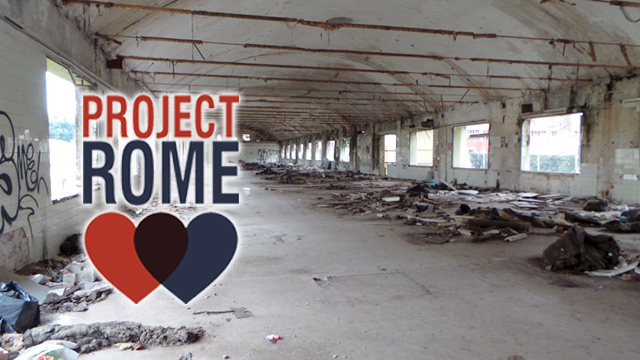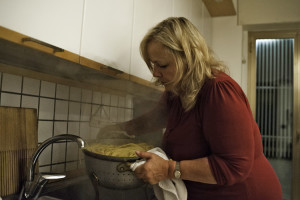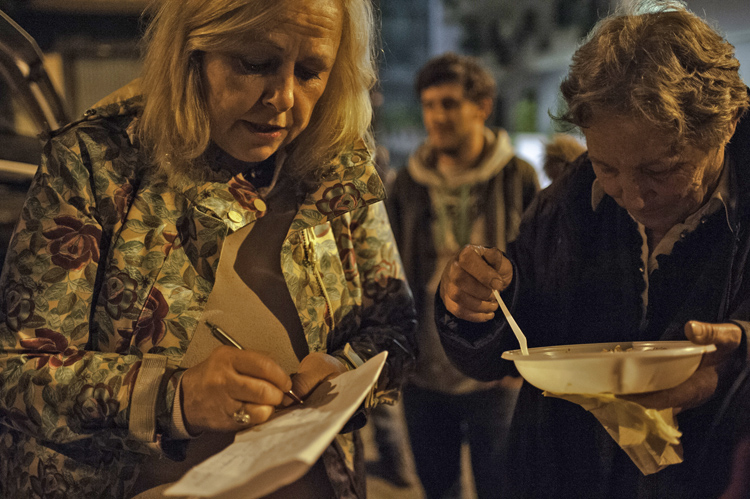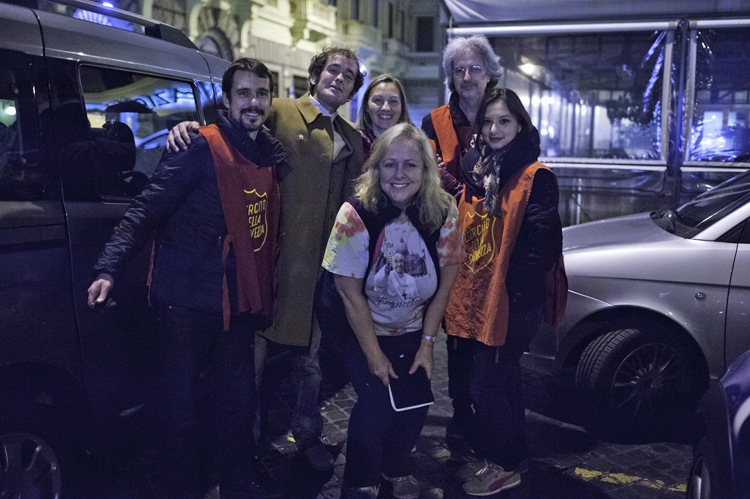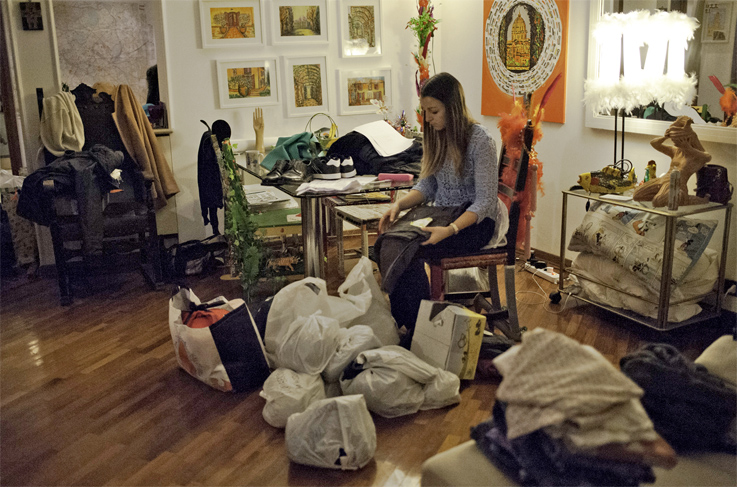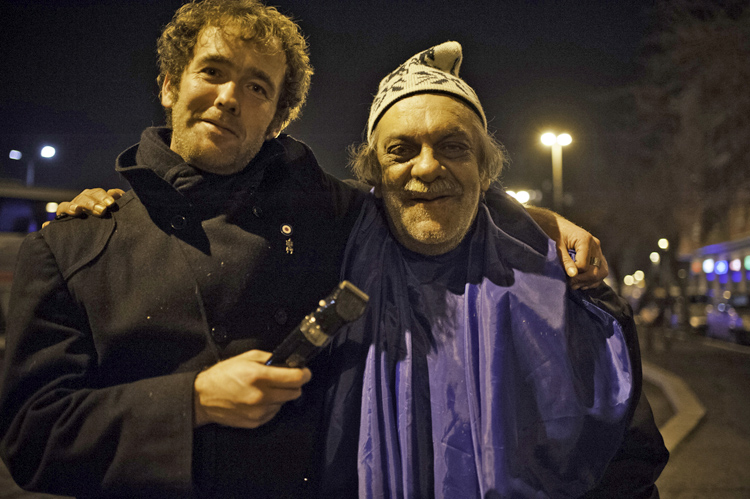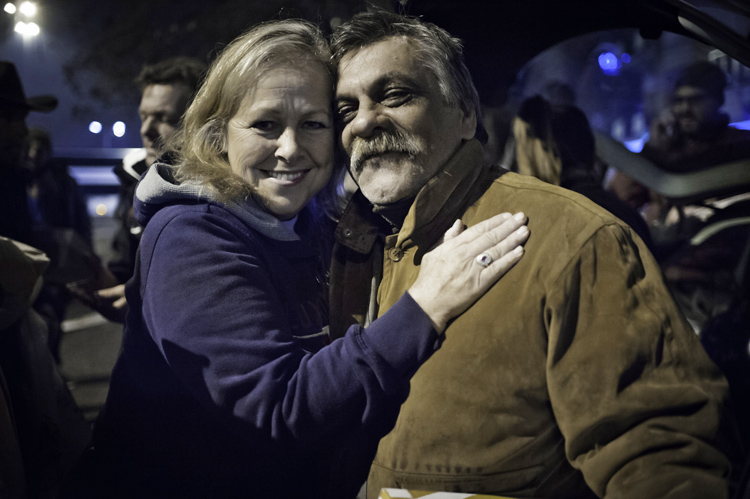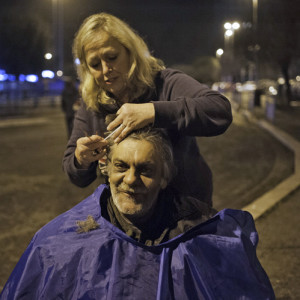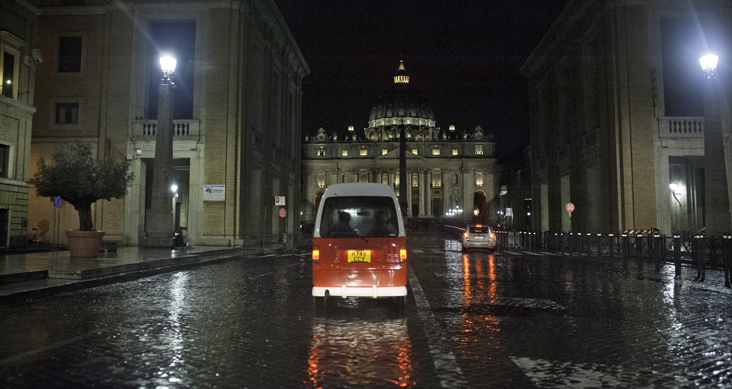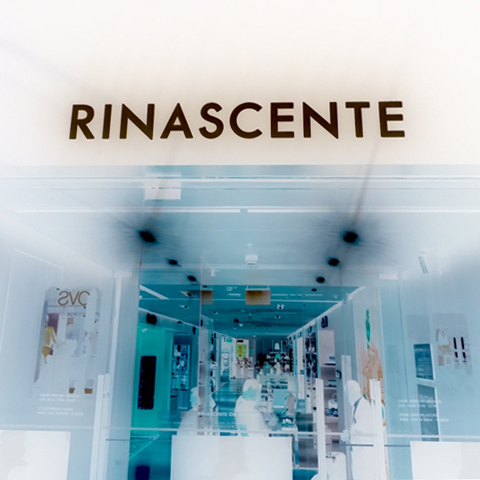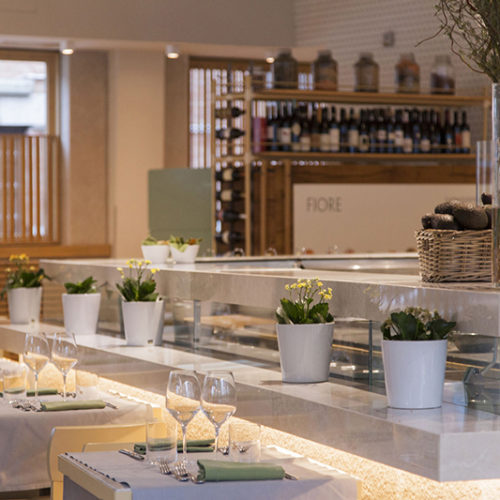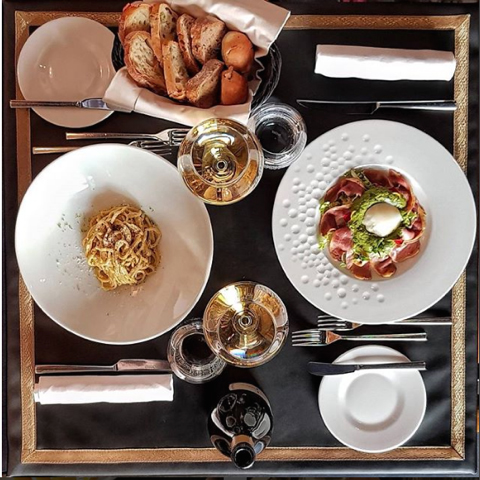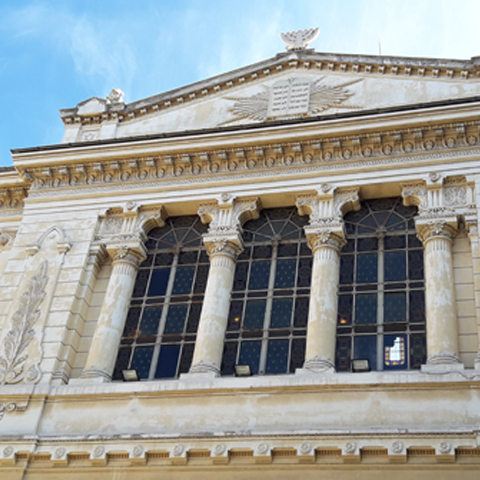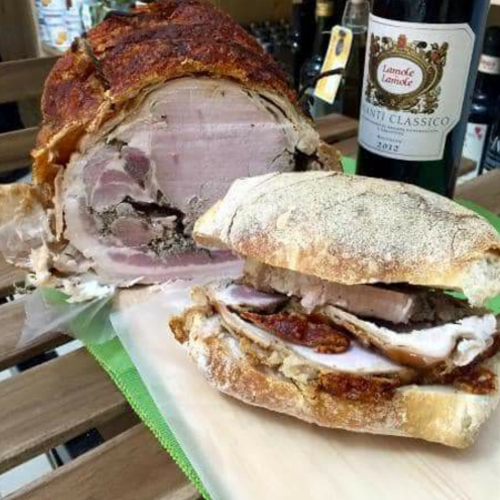“There’s a line in society. If you go below that line, you become invisible. It’s a lot easier to fall below the line than it is to get back up over it”. – Mary Stuart-Miller
Mary Stuart-Miller is a passionate woman, and Project Rome deals with the serious issue of homelessness, but it clearly hasn’t affected her sense of humor. I met Mary and her business partner, Steven Barnes, for a drink in San Lorenzo. From the moment I sat down until when we said our goodbyes, we talked and laughed nonstop.
Stuart-Miller came to Italy for love: after a one-year long distance relationship with an Italian journalist, she decided it was time to leave England and make the move to Rome; but the relationship fell apart soon after she arrived. “Trying to find time with him was like trying to nail jelly to the wall!” Mary laughs. New in town and suddenly single, she went out looking for parties and events to pass the time and meet people. But more than any social event, her interest was sparked by a charitable joint venture run by the Sant Egidio church and an international social group called Internations. This initiative, called Street Feeding, focuses on bringing food to Rome’s homeless.
“What a horrible name!” Mary exclaims, pointing out how Street Feeding so poetically characterizes the approach that charities tend to take. “It’s a gloves-on operation, like feeding animals at the zoo.” Despite the name, Stuart-Miller got involved with the venture and very soon was strategizing about possible improvements. “The food was low quality. I knew I could do better,” she recalls.
The following week, Mary showed up with 30 home-cooked meals, made from high-quality fres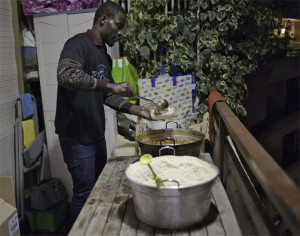 h ingredients and packaged in plastic boxes ready to give out. The next time she brought 50 meals, then 80, and then 100. “The highest number of home-cooked meals we’ve brought is 230. We also started bringing shoes and clothes.”
h ingredients and packaged in plastic boxes ready to give out. The next time she brought 50 meals, then 80, and then 100. “The highest number of home-cooked meals we’ve brought is 230. We also started bringing shoes and clothes.”
In a frustrating turn of plot that we often see in the movies these days, Stuart-Miller’s attempt to make positive change was met with opposition. She was contacted by the people running the charity and told that next time she showed up, she shouldn’t bring the food, clothes, or anything else to hand out. Mary was naturally upset and confused about why she’d been asked to stop being charitabl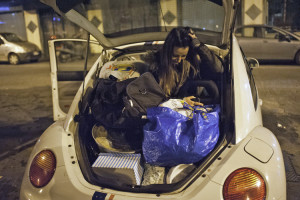 e at their event. You only need to spend a couple minutes with Mary to understand how headstrong and determined she is. She was not about to let someone tell her to stop giving. “I told them I was coming with more food than ever.” With that, she packed up “Herbie”, her Volkswagen Beetle (painted up to look just like Herbie the Love Bug) and headed out, accompanied by her 23-year-old daughter. “When we arrived, someone from the organization called the police. The carabinieri showed up and the ensuing chaos caused fights to break out between the homeless people.” Hardly the type of results expected from an organization dedicated to helping those in need.
e at their event. You only need to spend a couple minutes with Mary to understand how headstrong and determined she is. She was not about to let someone tell her to stop giving. “I told them I was coming with more food than ever.” With that, she packed up “Herbie”, her Volkswagen Beetle (painted up to look just like Herbie the Love Bug) and headed out, accompanied by her 23-year-old daughter. “When we arrived, someone from the organization called the police. The carabinieri showed up and the ensuing chaos caused fights to break out between the homeless people.” Hardly the type of results expected from an organization dedicated to helping those in need.
It was soon after this fiasco that Mary decided to split off and start her own organization. The name Project Rome had been in Mary’s life for a while already. It was the title she’d chosen for her plan to move from England to Rome. Now it was taking on a whole new meaning.
So in February 2014, Project Rome was launched. Two years later, the movement is going strong, with an average of 40 volunteers participating in each event. Some of the current volunteers are homeless people that Project Rome helped to get back on their feet who now want to give back.
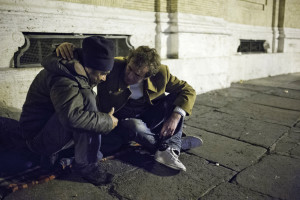 A prominent example of this symbiosis is Steven Barnes, Mary’s right hand man and head chef. Originally from England, Steve is a professionally trained chef who worked the kitchen of the prestigious David Hockney Gallery in Bradford, England. After moving to Italy, Steve’s life took some bad turns and he went into a spiral that caused him to fall below the line and become one of Rome’s many invisibles. He told me about how he lived on the street for 7 years until the day he was able to gather enough strength to pull himself back up over that line. “I just woke up. I could see how people’s patterns were keeping them down, keeping them from ever breaking the cycle. But I’m sure I would have gotten on my feet sooner if there was a Project Rome back then.” Always laughing and smiling, Steve’s characteristic grin reveals a missing front tooth. An artifact of his years on the streets, it is a small reminder that contrasts sharply with Steve’s otherwise stylish and distinguished appearance. He tells me he lost the tooth when he was attacked for sleeping in someone else’s territory.
A prominent example of this symbiosis is Steven Barnes, Mary’s right hand man and head chef. Originally from England, Steve is a professionally trained chef who worked the kitchen of the prestigious David Hockney Gallery in Bradford, England. After moving to Italy, Steve’s life took some bad turns and he went into a spiral that caused him to fall below the line and become one of Rome’s many invisibles. He told me about how he lived on the street for 7 years until the day he was able to gather enough strength to pull himself back up over that line. “I just woke up. I could see how people’s patterns were keeping them down, keeping them from ever breaking the cycle. But I’m sure I would have gotten on my feet sooner if there was a Project Rome back then.” Always laughing and smiling, Steve’s characteristic grin reveals a missing front tooth. An artifact of his years on the streets, it is a small reminder that contrasts sharply with Steve’s otherwise stylish and distinguished appearance. He tells me he lost the tooth when he was attacked for sleeping in someone else’s territory.
“We’re like chalk and cheese,” Mary says to me, laughing about how different she and Steve are. But these differences are what strengthen Project Rome. Mary comes from a public relations background, while Steve’s first hand knowledge of life on the streets brings a valuable perspective to the organization. “Food is not the most important thing, it’s compassion,” Mary tells me.
“Amore!” Steve jumps in. “You can find food. You’ll never go hungry in Rome, but what if you need a shower or a barber?” The rapport between Stuart-Miller and Barnes is dynamic. They are often finishing each other’s sentences. Mary comments, “I’ve seen Steve give away his jacket, and even his shoes.”
I ask Mary if she has any other projects aside from the food and clothing initiative. She tells me that when she discovered how many of the homeless were sleeping on the floor of an abandoned school building, she reached out to her connections in the community to ask for donations. “A convent donated 45 mattresses. We were eventually able to furnish the whole place.” She pulls out her phone and flips through pictures. I’m impressed. Some of the rooms are more visually appealing than some apartments I’ve been in.
The thing that Mary and Steve keep coming back to is the alienation that occurs when someone falls below that invisible line. They stress to me that the most important thing is not giving objects, but giving affection. “I’m hugging and kissing guys who haven’t been hugged or kissed in years. I even kiss some of them on the lips, but not in a sexual way,” Mary laughs ebulliently. She then turns the questioning around and asks me what I feel when I pass a homeless person. I tell her I usually feel a sense of guilt and powerlessness about the fact that I can’t help everyone I see. She says this is normal and gives me an unexpected tip: “Socks and deodorant. That’s what they need more than anything. I often carry them in my purse!” She explains that half-heartedly handing over money can sometimes add to the person’s humiliation and alienation, but giving them the things they really need shows that you’ve taken the time to understand their situation and that you care. I thank Mary for the advice and give serious consideration to carrying a couple pairs of new socks in my backpack!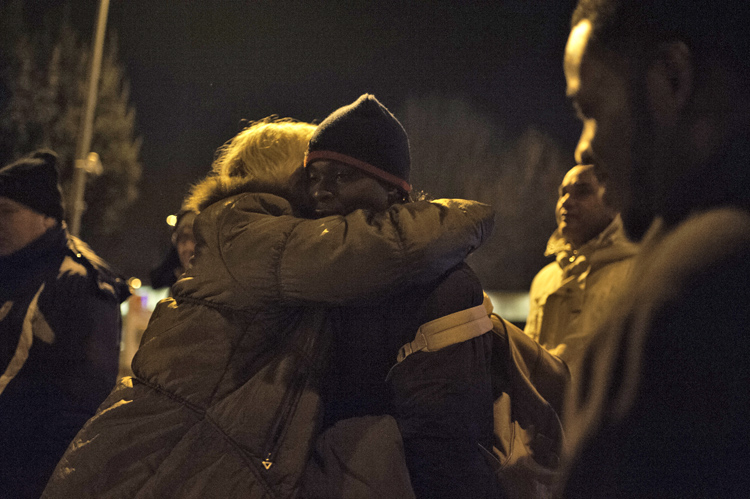
My last big question for Mary and Steve is where they see themselves in 10 years. Having asked the question many times, their hesitance and slightly wide-eyed reaction is one I’ve come to expect, but in the next moment, Steve jumps in and says, “We want to take 30% of Rome’s homeless off the street.” In a perfect example of their rapport, Mary laughs and volleys, “We didn’t confer, but that sounds like a great idea!” She goes on to say that Project Rome is getting the attention of some big players interested in giving support; namely Rotary International and the world-class consulting firm, Accenture.
In two years, Project Rome has become a unique oasis of love and compassion for those who need it most. While the bigger charitable organizations tend to be centered on efficiency, Project Rome’s focal point is compassion. When the others concentrate on quantity, Mary and Steve are fixed on quality.
